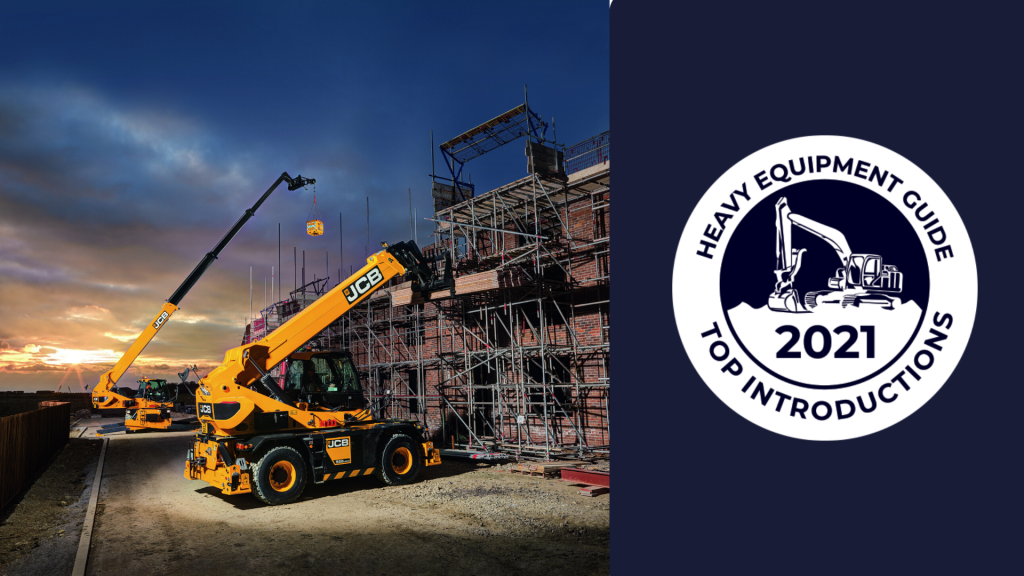
JLG Industries, Inc. now offers three new rotating telehandler models, the R1370, R1385, and R11100. This new range boasts capacities from 11,000- to 13,000-lbs and maximum reach heights of 67- to 97-ft, with the R11100 being JLG's highest reaching telehandler to date. With 3-in-1 machine capabilities – a traditional telehandler, mobile elevating work platform (MEWP), and rough terrain crane – these machines offer both horizontal and vertical lift-and-place capabilities.
"Rotating telehandlers have long been popular across Europe," says Rogerio dos Santos, vice president of engineering at JLG. "With the global megatrend towards urbanization, we are seeing an increased need for these types of machines in the United States. With more city centres come narrower streets and taller buildings with less open space between them. In these types of applications, it is sometimes challenging to use traditional telehandlers. Rotating telehandlers offer the ability to place the machine in a fixed position and reach multiple areas of the site, which means less repositioning and a reduction in machine traffic."
Key features of JLG's new models
The three new JLG models have nearly identical base configurations, though the R1370 and R1385 have four-section booms, while the R11100 has a five-section boom. All boom sections, regardless of model, are cylinder- and chain-driven to support higher reach and greater lift capacity.
The 360-degree continuous rotation of the upper frame on these models enables both horizontal and vertical lift-and-place capabilities, adding a new layer of functionality where it's difficult to maneuver a traditional telehandler. And since JLG rotating telehandlers are often operated in place, these models come with front and rear scissor-style outriggers with automatic levelling jacks, which enable the operator to position the machine and then level the frame up to 6 degrees to compensate for uneven terrain.
With three-in-one machine capabilities, these JLG rotating telehandlers can complete work done not only by traditional telehandlers but also by MEWPs when equipped with a platform attachment or rough terrain cranes when equipped with a truss boom and winch – potentially eliminating the need for cranes up to 97-ft.
Productivity features of the new machines
The R1370 comes with a Perkins 134-hp diesel engine, while the R1385 and R11100 are equipped with 168-hp FPT diesel engines. All models feature a 2-speed, stop-to-shift hydrostatic transmission that delivers a smoother ride over uneven terrain. Foam-filled tires come standard on all models. Air-filled tires are optional in two different treads.
JLG rotating telehandlers are available with 13 attachments. Popular attachments include work platforms, crane jibs and winches, standard and rotating carriages, forks, buckets, truss booms, and coupler-mounted hooks.
Standard and continuous auxiliary hydraulics come on all JLG rotating telehandler models with optional dual-auxiliary hydraulics available to power multi-function attachments. A hydraulic coupler is also available to improve efficiency when switching between attachments.
Ideal lifting and placing capabilities
All JLG rotating telehandlers come with an inching feature that allows the operator to run the boom at optimal speed without shifting the transmission into neutral. Finely tuned boom controls and soft stop slows the boom as it approaches the end of its stroke for precise lifting and placement of materials.
A remote boom control feature allows the operator to maneuver the boom from outside the cab when obstructions prevent clear visibility of the work area.
These new rotating telehandlers also have an intuitive operator interface and dual joystick proportional controls. The right joystick operates two functions – boom lift and lower and attachment tilt, forward and back. The left joystick controls boom extension and retraction, as well as turntable rotation.
Technology features of the new machines
To help operators work with greater confidence, each model is engineered with three exclusive technologies: Automatic attachment recognition, a Load Management Information System (LMIS), and a Load Stability Indicator (LSI).
The automatic attachment recognition system recognizes the attachment at the end of the boom, alerts the operator for confirmation, and then displays the appropriate load capacity chart. LMIS indicates whether the load is compliant and prevents operation that violates the load chart's boundaries. LSI limits the rotating telehandler's functionality when a load nears maximum capacity.
Operator comfort
JLG's rotating telehandlers come with enclosed cabs, air conditioning, and a secondary heating unit. They have adjustable suspension seats and an adjustable steering column to allow the operator to position themself comfortably. Integrated armrests are included to help reduce fatigue throughout the workday.
Ideal job site awareness
A reversing camera and lighting package come as standard equipment on all three JLG models to aid operator visibility. Optional work lights can be added for low-light situations.
A white noise backup alarm system can be ordered to enhance worker awareness. This system emits an audible alarm signal when the telehandler is travelling in reverse to alert those working in and around the machine.



